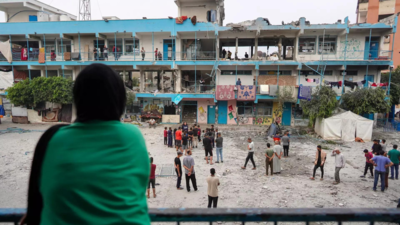
UNOSAT's assessment, released on August 3, provides a comprehensive overview of the impact of recent hostilities on Gaza's infrastructure. The analysis indicates that a substantial portion of residential, commercial, and public buildings have sustained damage, with some structures being completely destroyed.
This analysis is part of a broader effort by the UN to monitor and assess the humanitarian impact of the conflict. UNOSAT's satellite imagery offers a detailed view of the devastation, helping humanitarian agencies and organizations to better understand the scale of the damage and plan their response efforts accordingly.
The report highlights that the destruction is not limited to residential areas but also affects key infrastructure such as schools, hospitals, and utilities. This widespread damage exacerbates the challenges faced by the local population, already struggling with the consequences of prolonged conflict and economic hardship.
In addition to the physical damage, the report underscores the severe impact on daily life in Gaza. The disruption of essential services and the loss of homes have led to a significant humanitarian crisis, with many residents facing displacement and a lack of access to basic necessities.
The UN's findings are based on high-resolution satellite images that capture changes in the urban landscape over time. By comparing these images, UNOSAT is able to provide a detailed assessment of the extent and nature of the damage caused by the recent military operations.
This detailed satellite analysis serves as a crucial tool for international aid organizations and governments seeking to address the humanitarian needs of those affected by the conflict. The data helps in prioritizing relief efforts and allocating resources more effectively to areas most in need.
As the situation continues to evolve, ongoing monitoring and assessment by UNOSAT and other agencies will be vital in providing up-to-date information on the impact of the conflict and guiding the international response. The scale of the damage highlighted in this report reflects the urgent need for continued support and intervention to alleviate the suffering of the people in Gaza.
Topics
Live News
